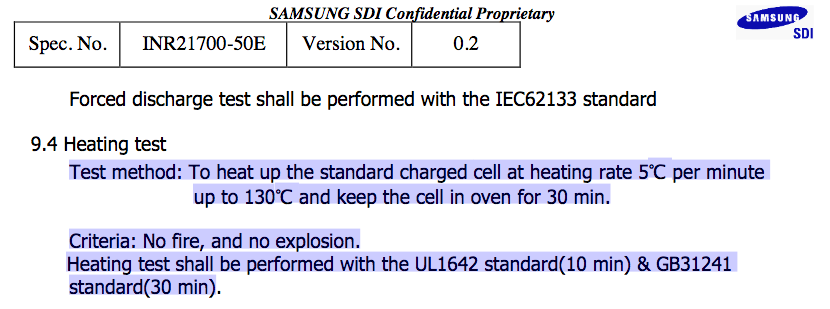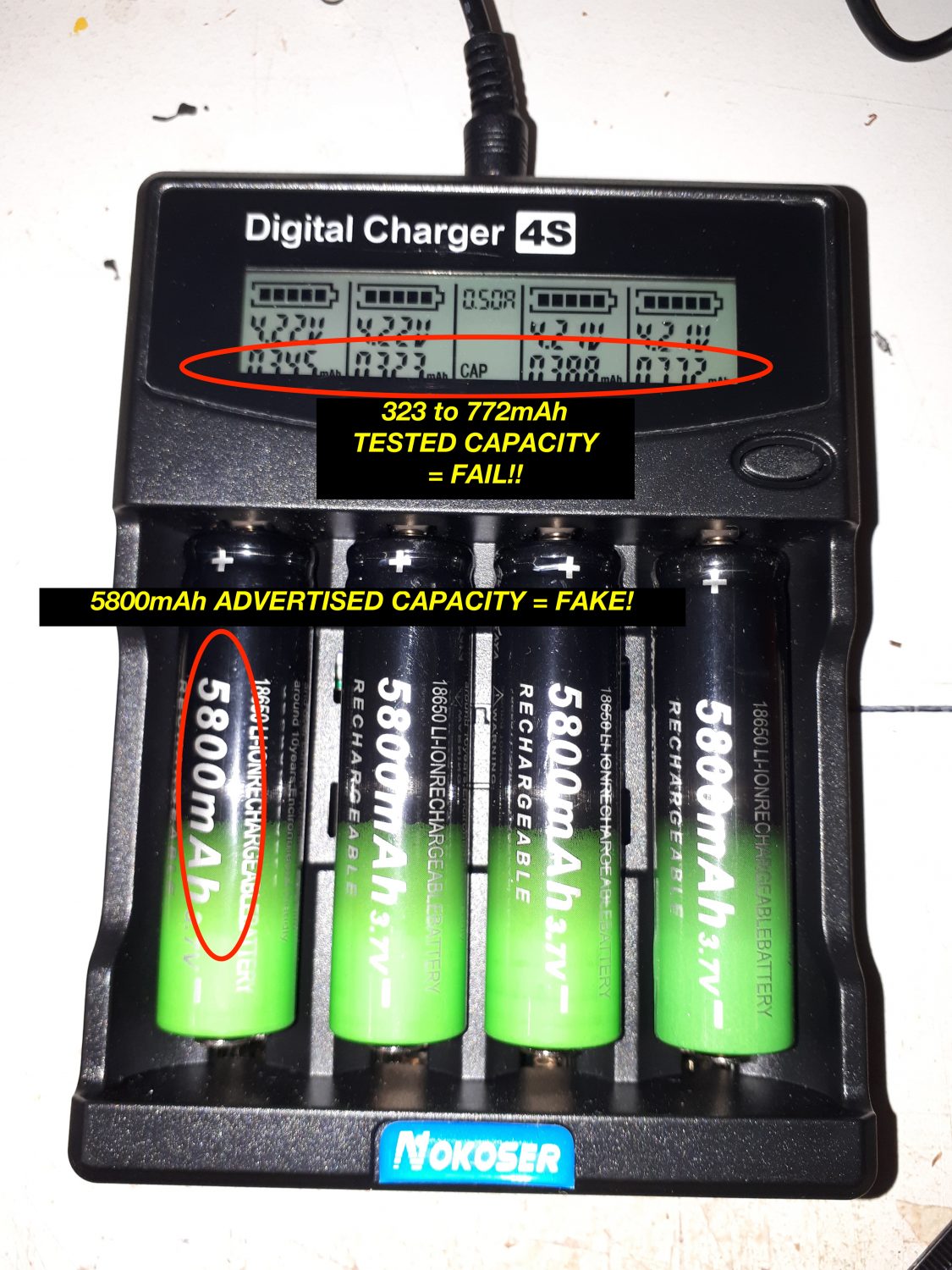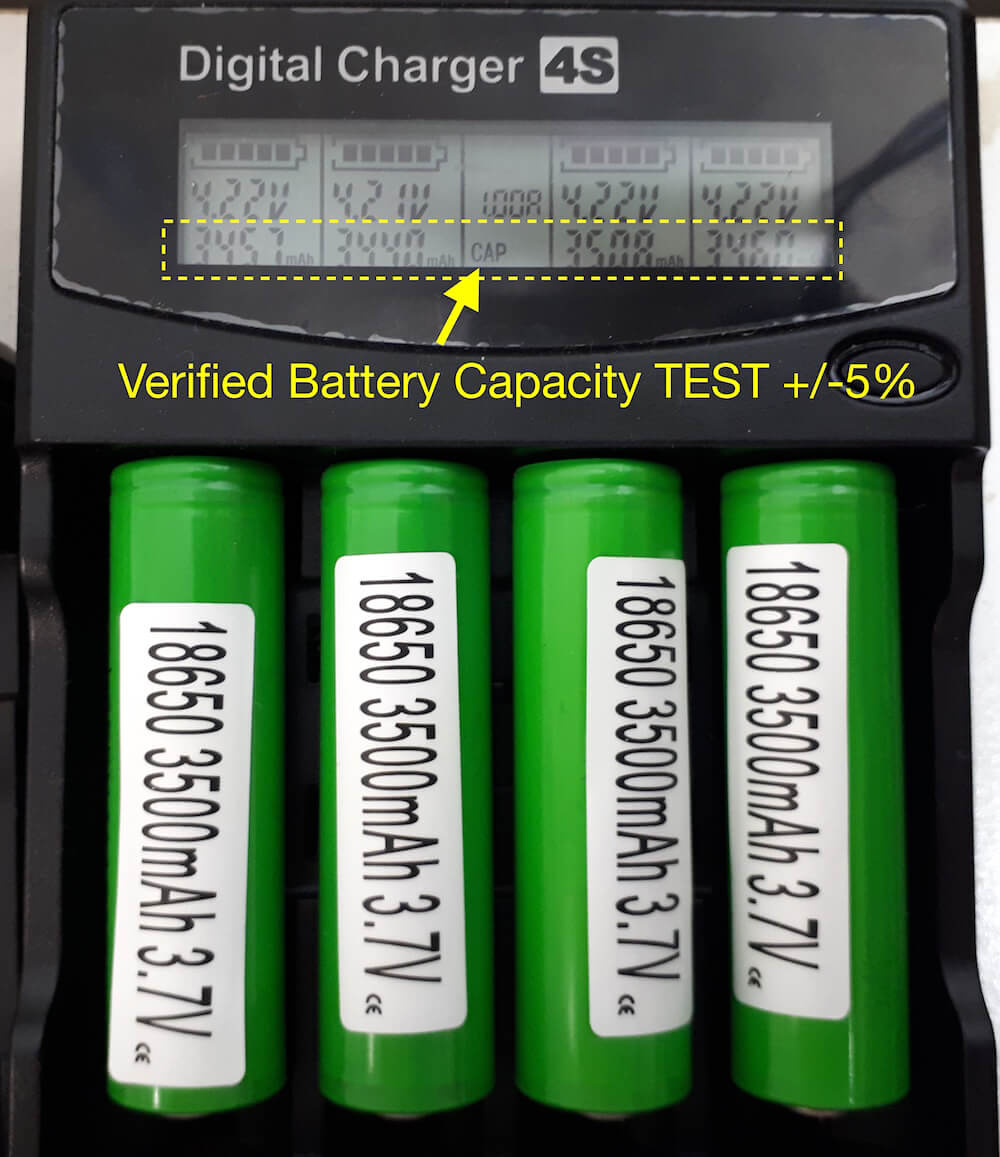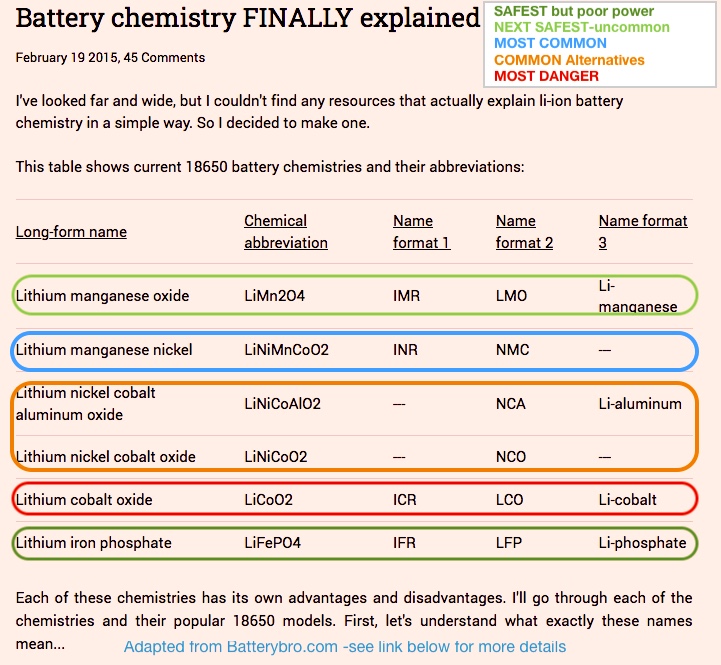Lithium Battery Safety Is Your Responsibility.
IMPORTANT NOTE: The information on this page including any datasheets linked below are compiled from sources on the Internet and is provided for reference only in the interest of safety. Goldseekr™ can not guarantee accuracy. To prevent fire or personal injury, never charge or discharge a cell before verifying the information yourself using the original specifications sheet provided by the manufacturer.
READ THE VAPER’S SAFETY GUIDE:
https://www.vapeloft.com/blog/ultimate-vapers-guide-battery-safety
Easy-to-read. Skimmer’s summary at the bottom.
Something to consider as you read about safety is that while hundreds of devices are powered by lithium cells, those cells are not designed or meant to be handled with any kind of regularity – that’s why they’re safe to use. With that said, if you intend to handle such lithium cells, safety is your responsibility.
A BRIEF OVERVIEW - The Balance of Power & Safety
Perhaps the two most common factors that arise in the discussion about lithium cells are capacity and safety. The topic of continuous discharge (Amps) should also arise if there is to be a high-drain demand on the cell. More below about high-drain devices.
The following table adapted from batterybro.com helps guide us to identify common variations in the chemistry types of Li-ion cells on the market, and commonly associated labels. It is useful to understand these are ‘agreed upon’ general terms and identifiers: it is not an officially endorsed industry-recognised standard labeling system.
Another great resource for this purpose comes from Battery university. They offer a handy comparison profile covering the range of common Lithium batteries in more detail.
From the colour association I have overlayed below, we can see that certain types of lithium chemistry combinations present greater danger than others.
The single most important primary Safety factor is: THERMAL RUNAWAY – what happens when the battery gets too hot. The three most influential elements on thermal runaway are:
1. The kind of Lithium cell (aka chemistry make up)
2. How the cell is treated in use, storage and handling.
3. Continuous current flow rate when:
a/ Charging, AND
b/ Being used in a device. (ie. High-Drain devices)
KNOW YOUR CHEMISTRY
The Prospector and Jumbo lithium battery kits for the SDC2300 use the more stable INR or Nickel chemistry. These (and many other cells) are not fitted with protection circuits. More on protection below.
However protection can offer additional safeguards when there is a danger that the charger being used to replenish the cell is not capable of the functions crucial to ensuring the current flow into the cell/s is fully managed. Therefore, while the cells supplied for your SDC2300 are the Flat Top (unprotected) type, the high quality chargers supplied with the kits includes all the necessary essential built-in features to automatically manage overcharge, and over-discharge protection, and to offer the highest standards of safety, and ease of use.
One area protection was deemed necessary was with certain Lithium-Cobalt chemistries. Cobalt was the rogue element in early Lithium configurations as those chemistry combinations were/are much less tolerant to heat and other ‘disruptions’ compared to the more stable Nickle or Manganese – or indeed the comparitively ‘docile’ LiFePo4.
It is useful to keep the following in mind:
All the lithium cells can fail if given the wrong treatment. The results will vary only in how much immediate and extended danger will be involved.
By “extended danger” I refer to the chance that any object immediately adjacent to a hot venting cell will also be damaged.
Presently, some combinations manufactured by the leading brands do contain the addition of Cobalt, but in combinations and proportions that render the chemistry a little more robust.
All the lithium cells can fail and rupture if given the wrong treatment.The results will vary only in how much immediate and extended danger will be involved.
So exactly how much is a little?
Well, – fundamentally that depends on the chemistry combinations. To understand this better, we have to look at Manufacturer Data Sheets, and numerous studies and tests that have arisen from recognising the potential dangers of lithium cells
DATA SHEETS are available from manufacturers for virtually every cell that has been made, and secondlifestorage.com has compiled a useful reference list with links if you care to have a dig around. Each data sheet follows some regular steps for assessing each cell. The following data sheet is relevant to the LG MJ1 cells which we include with the PROSPECTOR KIT.
The LG MJ1 18650 DATA SHEET
(https://www.nkon.nl/sk/k/Specification%20INR18650MJ1%2022.08.2014.pdf)
The SAMSUNG 50E 21700 DATA SHEET
(https://www.dnkpower.com/wp-content/uploads/2019/02/SAMSUNG-INR21700-50E-Datasheet.pdf)
THERMAL TESTING & RESULTS
A typical HEAT TEST adopts the following criteria:

THERMAL RUNAWAY.
Heat is the primary rogue in lithium safety but it’s affect depends largely on the cathode chemistry of the cell. This paper on THERMAL RUNAWAY reveals the effect of heat on three main cell compositions:
LFP (LiFePO4),
LMO ( LiMn2O4),
NMC (Li(Ni0.33Mn0.33Co0.33)O2)
Heat can be created by:
• Over charging/discharging in already hot environments,
• Cell puncture,
• Crushing,
• Shorting,
• Exposure to sunlight or ambient heat- Air temps in a hot car can reach above 65˚C
HEAT TESTS & RESULTS:
- TEST * Storage tests were conducted with prolonged 60˚C for a period of of 1 week to measure changes in battery capacity and performance.
- RESULT – No fire or explosion.
- TEST * Fire/Explosion tests were conducted at 125˚C for 10 minutes:
- RESULT – No fire or explosion
MY CONCLUSION (in my humble opinion)
* Risk of fire, venting or explosion may exist when exposed to 125˚C temperatures for greater than 10 minutes.
Consider this kidsafe article when thinking about the heat in your vehicle:
“On a 29 degree Celsius day a car can reach 44 degrees in just 10 minutes and a deadly 60 degrees in 20 minutes. Leaving the window down a few centimetres does little.”
So what about using PROTECTED CELLS? Will that ensure safety? The answer is no.
Protected Vs Unprotected cells
PROTECTION CIRCUITS only work within a device.
A single protected cell sitting alone in a hot environment (ie. an oven or fire) with no connection to anything has no protection from its ‘protection circuit’.
Protection circuits come in to effect to regulate incoming and outgoing current flow. An example would be when a protected cell is being used within a device that has no built-in electronic battery management system (BMS) for charge/discharge balancing features. Should the cell get hot from excess current flow rates, the circuit will activate. This not only protects against harmful accidents, but also functions to prevent damage within the cell structures and keep you cell in good order.
CHARGING / DISCHARGING & HIGH-DRAIN DEVICES
Protection circuits manage INCOMING CURRENT when being charged in chargers, and OUTGOING CURRENT during discharge when using your device. Every dedicated “lithium cell” charger would typically come with a BMS to fully manage the charging process.
However, when it comes to discharging the cell, few devices come with the built-in circuitry
to protect the cell in this way. In devices that put little demand on current flow like your SDC2300, this is not likely to become an issue as a protection circuit if fitted, would presumably not encounter an event that would trigger its function.
However torches, lights, headlamps and devices like vaping mods can place a load on the cell. In cases where high-drain is expected, a protected cell may be warranted. Nonetheless, vaping devices constitute a vast range of models requiring very high-current rates upward of 20-40 Amps and many users power these with unprotected cells.
But knowledge is king with safety, and knowing if the device you are powering is high-drain or not can help you make better choices. A HIGH-DRAIN DEVICE means your cell likely to get HOT! So be aware and manage your use for safe operation.
Cells supplied in our SDC2300 Lithium Battery Upgrade kits have relatively low continuous current (Amp) rating and are best suited to a device of low to medium current demand.
Prospector Kit
The 18650 cell supplied with the LGMj1 (green in colour)=10Amp,
Jumbo Kit
The 21700 Samsung 50E (Blue in colour)=9.8Amp)
FAKES & Cheap BARGAINS
Fakes quite possibly present the greatest danger of all. They are simply not worth the risk to yourself, or anyone else you’re travelling with! End of story.
I purchased these batteries from ebay. These guys were promising a lithium cell with a massive 5800mAh – this animal has actually never been manufactured! Even the best factories cap-out their 18650’s at around 3500mAh. So just to see if my gut feel was right, I bought these and tested them.
Clearly the test results in this image prove mu hunch – These were FAKES!

So How Do You Know If It Is Fake?
If it looks too good to be true……
The image above is from a lengthy article at https://lygte-info.dk. which exposes both the bad brands and highlights the good ones worth trusting. This site is a useful resource for checking the quality in any battery or charger product you might be interested in.
The author recommends people steer away from the following lithium brands:
UltraFire, GTL, GTF, GIF
See what the internal structures of poor quality 18650 cells look like.
“THE GOOD CELLS”
As recommended by the guys at https://lygte-info.dk these are a few of the top cells worth your time and money. Note the main brands represented here. These are not protected cells.
SAMSUNG, SANYO/PANASONIC, LG
OUR PREFERENCE - in Li-ion cells
When the battery gods finally smile on us all, we will have a very, very safe power storage cell that will have awesome capacity to meet all our demands in usage and recovery (charging)… and it may not be lithium!
Until then we get to choose the best of the more stable chemistry offerings that suit our needs.

Our initial lithium choice (2016) was the LG HG2 18650 3000mAh cells. These offered a better chemistry and capacity over many that were available at the time, plus plenty of grunt if you happened to run them in headlamps, torches, fans etc. -(if using them in such devices be very careful of cells getting hot through high discharge in super bright lights and strong fans etc.)
Then in 2017 we moved to the LG MJ1 3500mAh cells. These are currently offered in our PROSPECTOR battery kits. This cell improves the safety margin with the lower amperage than the LGHG2, and (when treated with safety in mind) still goes great in other devices like torches, headlamps etc. You can read more specifications in the links below including the Data Sheet from the Manufacturer.
We now also offer the 21700 5000mAh Samsung 50E cells in our JUMBO Kit . These are the largest cell the SDC2300 can physically take (2020) and should be respected for their potent power capacity…. and relative increase in cautions! Additionally, special treatment is required to maximise safety around the button top to minimise the chance of shorting due to damage and intrusion from battery terminals. We developed a special safety end cap to achieve this and these are included the Jumbo kits.
THE FUTURE??
The radar is always on the lookout for better, safer alternatives to use in our kits and you can be sure we will make the move as soon as technology provides a better solution. Sign up to our email to get any news on this.
MANUFACTURER'S DATA SHEETS
18650 DATA SHEETS
INR18650 LGMJ1, 3500mAh, 10A
Pdf DATA SHEET from https://www.nkon.nl
INR 18650 LGHG2, 3000mAh, 30A
Pdf DATA SHEET from https://cdn.shopify.com
21700 DATA SHEETS
INR 21700 50E, 5000mAh, 9.8A
Pdf DATA SHEET from https://batteryservice.bg/
BATTERY GUIDES & REVIEWS
18650 LGMJ1
This REVIEW From budgetlightforum.com
This REVIEW From batterybro.com
18650 LGHG2
This REVIEW From budgetlightforum.com
This REVIEW From batterybro.com
21700 SAMSUNG 50E
This REVIEW From budgetlightforum.com
CHARGER REVIEWS
MIBOXER C4-12 (we offer the latest version)
This [early model] REVIEW is from lygte-info.dk
Scroll to the bottom of the review for simple conclusions.
MIBOXER C2-6000 [no longer in production]
This REVIEW is from lygte-info.dk
Scroll to the bottom of the review for simple conclusions.
MIBOXER C2-3000 [nice USB charger – a little slow at 1.5A]
This REVIEW is from lygte-info.dk
Scroll to the bottom of the review for simple conclusions.
NITECORE SC2 [better options now available 2020]
This REVIEW is from lygte-info.dk
Scroll to the bottom of the review for simple conclusions.
XTAR VC2 Plus Master [better options now available 2020]
This REVIEW is from lygte-info.dk
Scroll to the bottom of the review for simple conclusions.




